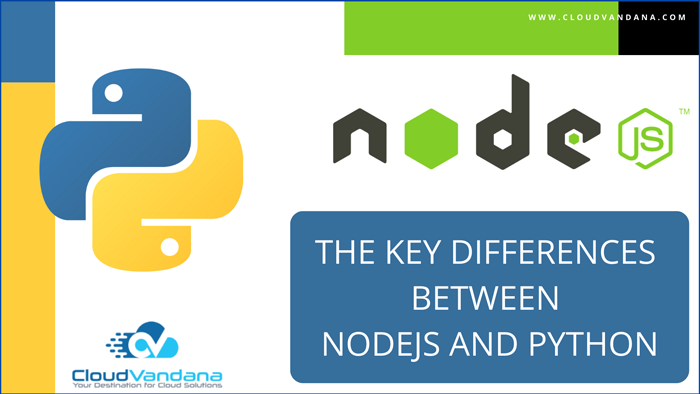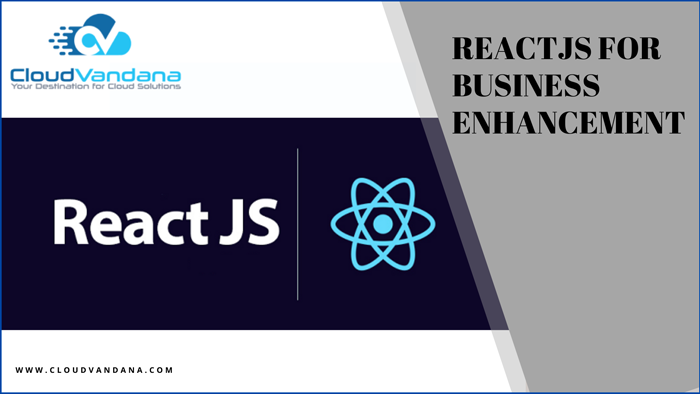STAFF AUGMENTATION MODEL AND ITS BENEFITS

Staff Augmentation is an outsourcing strategy that is very popular among organizations across the globe. This hiring process consists of evaluating the existing in-house resources and then determining the additional skills that are required to complete the project. This process efficiently manages both in-house and outsourced resources depending on the project requirements. Today, in this blog, CloudVandana will discuss how to choose the right staff augmentation model and its numerous benefits. Let’s have a look at how to choose the right model- To select the right augmentation model, companies need to set their goal and priorities first. Most of the time, organizations use various providers as per their business requirements but it is recommended to make the contract with one reputed firm to avoid any hassle. When To Use Staff Augmentation Services Augmentation is extending existing in-house resources for making the workflow faster and more efficient. If a project requires a specific skill set and the in-house team becomes unable to perform it in the right way, then organizations should go for a staff augmentation model to enhance their business. This model saves time that organizations generally waste in finding professionals through the traditional hiring process. Organizations just need to make a contract with an augmentation firm like CloudVandana. On the other hand, it saves cost as the organizations do not need to bear the cost after the project deployment. This process is scalable, so organizations can increase or reduce the team size whenever required. Through this hiring model, organizations can get highly skilled and experienced developers for their projects. If they go for an augmented process, they do not need to arrange any training sessions as they are already trained. This also saves time, money, and the responsibility of the managers toward a successful project deployment. It is a faster and easy way to adapt developers to the project’s working ambiance. The managers can easily control the team and get to know each and every step through this hiring model. So clear transparency is maintained among the organization and the staff augmentation firm. Benefits Of Staff Augmentation Let’s have a look at some of the benefits of staff augmentation. 1. Enhanced Productivity Staff augmentations lead to more productivity and efficiencies. The hired team is always focused on the project. They are always dedicated to their assigned task to complete their task within the specified time. As their efficiency level is higher, they can easily handle various projects at a time. 2. Enhanced Growth As the solution is flexible, brands do not face any challenges with an investment loss. Organizations just need to pay them for the service they provide and when the task is over, they just need to cancel the contract with the staff augmentation firm to avoid the additional cost. Those saved costs can be used in the organizational development process to increase growth. 3. Cost-Effective Solution Hiring full-time skilled developers can be quite expensive as organizations need to pay them continuously even if there is no active project to perform. But the cost of hiring remote software developers is comparatively low as there is no training cost, administrative cost, or other hiring-related costs associated with this model. 4. Support 24×7 Staff augmentation provides the best-skilled resources to any organization. They are always dedicated to providing the best solution and are ready to work as per the time zone of the organization, so they can provide support whenever needed. These are just a few of the benefits from the numerous advantages of Staff Augmentation that organizations can experience by adopting this model. Still, confused to understand your project’s requirements? Just schedule a call with CloudVandana and get the best team of remote developers who will guide you through your project. TRY OUR DEVELOPERS FREE for a week and then make the contract with us. Hurry up. Request a Free Consultation YOU MIGHT ALSO LIKE
5 MISTAKES TO AVOID WHILE HIRING THE REMOTE SOFTWARE DEVELOPERS

Remote software developers have become an essential part of organizations since the pandemic. Organizations worldwide realized the benefits of remote work, so managers are adopting this remote hiring process to access the best talent worldwide. However, organizations need to consider a few essential things before finding the best developers. Today, in this blog, CloudVandana, will discuss the five mistakes that should be avoided while hiring remote software developers. First, let’s look at five significant mistakes that organizations should avoid. Hiring Local Remote Developers Though the world has adopted offshore development, many organizations still limit their hiring efforts to local talent. They might feel that hiring developers at the same timezone is easy, but they miss out on the best opportunities of building a remote workforce. The offshore hiring model enables companies to expand beyond their local network and access a global talent pool. Time-Taking Hiring Process Some organizations still prefer the traditional hiring process for hiring developers. However, this conventional process makes the whole effort slow. In addition, the slow process affects the workflow and creates a skill gap. Organizations can contract with staff augmentation firms like CloudVandana and access the vast talent pool of expert developers. So organizations should consider hiring from an offshore development center to avoid challenges. Judge The Developers Only By Their Degree Organizations should not shortlist the candidates based on their resumes and degree. Offshore centers always select candidates based on their skills and experience. So when an organization hires developers from a development firm to avoid any hassle regarding developer selection. Only Considering The Technical Ability Technical skills are essential when hiring remote software developers. Developers should be experts at writing code but may not be perfect for the business. An offshore development center suggests developers with the size and requirements of organizations. Developers may need to collaborate with other departments in a remote-first workspace. They should be efficient in explaining and solving technical challenges to non-technical people. Hiring From Freelance Platforms Most of the time, organizations hire freelance developers from various freelance platforms. It might be a cost-effective solution compared to hiring from an offshore development firm, but there are a lot of challenges involved with this process. If any post-deployment complexity comes, organizations might not find that developer to fix the problems. So they need to arrange the hiring process over and over. Freelance developers focus on a specific task assigned to them rather than involving themselves in the organization. So a strong bonding cannot be formed. So, from the above discussion, we can say that organizations should consider these points before hiring remote software developers. CloudVandana provides a large talent pool of expert developers that organizations can employ depending on their size and project requirements. TRY OUR DEVELOPERS FREE for a week and stay one step ahead of your competitors. Request a Free Consultation YOU MIGHT ALSO LIKE
5 KEY DIFFERENCES BETWEEN NODEJS AND PYTHON

NodeJs and Python both are backend technology for web application development. Therefore, the programming language, environment, and the entire tech stack need to be selected as per the nature of the project. Today, CloudVandana will describe the key differences between NodeJs and Python in this blog. Using the right back-end technology is essential as it determines the project’s performance, resource consumption, ease of deployment, and success. Both JavaScript and Python are used worldwide and developed on different timelines. Python has been around since 1991, and NodeJs was introduced in 2009 as a JavaScript runtime environment. Most of the time, app owners get confused while choosing the right back-end web development technology. So, to make the right decision, it is essential to learn about the advantages and limitations of these technologies. What Is NodeJs NodeJs is an event-driven, scalable technology that brings endless efficiencies to projects. Most development teams prefer NodeJs to use JavaScript on both clients and server-side. What Is Python Python is a full-fledged, high-level, and object-oriented programming language. It has enormous libraries, APIs, and tools to enhance any project. As a result, python is beneficial for various programming paradigms and is being used successfully. NodeJs Vs. Python Backend technology plays an essential role in web development. But, first, the development team needs to decide which language will be most suitable for their projects. Stack overflow surveyed research in 2019, and as per their research, Python was the most loved programming language, and NodeJs was the most popular tool among experienced and skilled programmers. Among various advantages and disadvantages, let’s look at the five key comparisons between Python and NodeJs. 1. Scalability Scalability is an essential factor for growth as the developers need to scale their application as per the project requirements. When a developer creates an MVP, the applications remain light, and any language or coding environment will work for the task. NodeJs provide enough flexibility to the developer. Developers can create a set of microservices and modules with this framework. The modules can efficiently run their processes when the application is scaled. In addition, developers can add nodes and expand them by adding resources. Python has some issues with threads. The preinstalled Global interpreter Lock does not allow it to operate several threads at the same time. So, developers can’t run another process before the completion of one process. It has a few drawbacks in terms of scaling. Developers sometimes find it difficult to maintain code when the project scales. 2. Architecture NodeJs has a single-threaded architecture that handles various requests with a single thread. Whereas Python follows a standard implementation named CPython using the interchangeable code modules. NodeJs is a runtime environment with server-side asynchronous programming. As a result, the input-output functionality is not blocked. Developers can run parallel codes for faster deployment. The event-driven architecture allows NodeJs to take up actions whenever an event occurs. On the other hand, Python does not support such functionalities and multithreading. Developers need to run and complete one process before starting another. There are some tools that can help Python to create asynchronous applications using Python, but developers do not get the desired asynchronicity through this process. 3. Performance & Speed While developing an application, performance and speed are considered the important factors to get the desired results. NodeJs make the execution process simpler and faster. The framework executes the code outside the web browser. So, the application running on the web browser performs better on the efficiency metrics. This also allows the app to pull features like TCP sockets. Python’s architecture prohibits multithreading, which is a problem in this case. It slows down the speed of the whole process as other processes do not run simultaneously. It is not fast enough for applications that can frequently recall data from the webserver. Python’s interface is easy but not so well optimized in speed and performance. 4. Community The community provides a group of users or developers who are engaged with technology. As they are active in various technology updates, they can easily update the popular library, run the debugging exercises, and even add new features. The NodeJs community is quite large and active with expert NodeJs developers. So it is very easy to find NodeJs talents from the community quickly. Python’s community is also quite significant as it has been around for a long time. Python’s community provides talents of every category, from junior to senior contributors. So it is very easy to find talented and experienced developers. These experts take an active part in the improvement of this language. 5. Extensibility Extensibility is the practice of adding various features to a language using third-party tools. More extensibility across third-party tools simply means that the language can be modified with added features. NodeJs can be paired with Babel for enhanced front-end development. Developers can also use the development framework jasmine to manage the project. Most of the time, Sublime text is used in Python to edit codes. The robot framework helps in automated testing. There are endless features of both frameworks that developers can select as per their project needs, but for that best practices, organizations need to hire experienced software developers. Are you looking for remote software developers for a faster project deployment? Please feel free to schedule a call with CloudVandana, a reputed staff augmentation firm in India, and hire on-demand remote software developers. Schedule a call now. Request a Free Consultation YOU MIGHT ALSO LIKE
REACTJS FOR BUSINESS ENHANCEMENT

ReactJs is a JavaScript framework that helps companies develop dynamic and engaging web and mobile applications rapidly. It is essential to create an interactive interface in today’s digital world. Today, in this blog, CloudVandana will describe the functionalities of ReactJs for business enhancement. Organizations across the globe depend on this framework to get the best return on their investment from their apps. The Requirements Of A Web Application An organization’s success depends on its online presence nowadays. So the increasing number of internet users worldwide is one of the main reasons behind the popularity of the applications. Following are the key benefits of developing a web application. 1. Through a web application, organizations can reach out to new clients. 2. Web applications are available to customers 24×7. 3. By using highly responsive web applications, companies can maintain a transparent brand presence to their consumers. 4. A chatbot can be installed to provide live support. 5. A well-designed web application increases the visibility of the brand. After discussing the requirements of a web application, let’s have a look at the features of ReactJs to boost the business. Features Of ReactJs For Business Enhancements React is an SEO-friendly web application adopted by organizations worldwide for front-end web development. 1. React provides reusable components and decreases the average app development cost. This is useful for front-end development. It saves the developers’ time by reducing the need to write duplicate code for identical functionality. On the other hand, the framework can increase the development process on the server side. 2. React has a straightforward user interface. As a result, developers around the globe are using React as their primary development framework. This feature helps organizations and developers perform tasks and deploy any product faster. 3. ReactJs Improves SEO. In this digital era, no organization can succeed without considering search engine optimization for their website. The two factors that help to increase the on-page SEO are faster page load time and rendering speed. So it decreases the bounce rates. 4. Helps Business Apps To Load Faster. Developers need something more than HTML to work. Developers can use enhanced HTML or JavaScript to build HTML. Developers can directly build HTML in JavaScript. 5. One Way Data Flow To Make Business Apps More Stable. React works one-way data finding confirming that modifications made to child components have no impact on their parents. When a user types text in the input field, the component’s state does not change, but the data model gets updated. This framework has many benefits that organizations can utilize by hiring an experienced remote React developer or team of expert developers, depending on company size. Are you looking for expert developers to manage your projects efficiently? Please TRY our DEVELOPERS FREE for a week and hire the best team of remote developers from the vast talent pool of CloudVandana. Schedule a Call. Request a Free Consultation YOU MIGHT ALSO LIKE
Difference Between Staff Augmentation and Managed Services

Understand the distinctions between staff augmentation and managed services to determine which approach best suits your business needs, offering insights on flexibility, control, and cost management. Table of Contents Staff Augmentation Managed Services Comparing the Models YOU MIGHT ALSO LIKE Staff Augmentation Staff Augmentation evolved when short-term resource constraints and budgetary pressures were necessary to address these issues. When there is a requirement for short-term and immediate engagement, many organizations use staff augmentation to get the best skills and talents. To fill the internal resource gaps, most organizations use external sources by recruiting for the short term. After completing that project, the external source would no longer be on the budget. However, this remains a short-term solution; if this situation occurs again, the same process should be executed again. However, staff augmentation provided a long-term solution for such cases; even after completing the project, the contract would not be terminated. Since the employee will get a good understanding of the internal systems and processes of the organization, they become a valuable resource. When one project is completed, the same resource can be redeployed to any other project and continue as a contractor with the organization. Managed Services Like a telescope that helps to see any object from a distance with clarity, managed services help organizations make large-scale decisions that can lead them to long-term goals. The clients who use the managed services look beyond traditional outsourcing; they focus on getting long-term benefits from a solutions partner. A standard managed Service allows an organization to outsource the operations, management, and delivery process very effectively to a lower business cost. With the help of managed services, organizations can focus on the right people and resources on the right things, saving time and money. This strategic initiative will help you increase efficiency and productivity. The pricing structure, based on regular monthly billing around service levels and volumes, rather than per diem fees associated with staff augmentation, ensures that costs to the business remain within the forecast. In addition, the reduced volatility in prices supports accurate and predictable budgeting. Comparing the Models Let us discuss some differences between these two models. In the Managed Services model, the contractor is committed to delivering an outcome at a predefined price. At the same time, the Staff Augmentation model gives input. Input refers to the performance of the resource on the activity with no commitment that the activity will provide the desired outcome. The managed services focus on value-based performance; the organization should define the requirements of services and performance based on it. Pricing is always related to the outcome. Based on the pricing, whether the service requirement should disappear or be minimized is decided. The flexibility in the demand is always associated with the cost, which is more so in the staff augmentation model. However, in the managed service model, the scalability to market is tied. Let’s discuss the service commitment. Under the Staff Augmentation model, the service commitment is the number of hours they work. However, in the managed services model, the provider is supposed to take all risks to meet the service commitment. Staff augmentation plays a significant role in an organization’s IT department. Even in a managed services model, staff augmentation is often utilized for selected services at specific points in time. However, when staff augmentation becomes the de facto operating model for an IT organization, it constitutes an ineffective form of outsourcing that involves high cost, low commitment, and high risk. IT departments utilizing staff augmentation in this manner should recognize that they are already “sourcing externally” and should seek to adopt an accurate managed services model to maximize value. Are you looking for a reputed staff augmentation firm to hire remote software developers? CloudVandana provides a vast talent pool of expert software developers from which you can select the best developer or team of developers to enhance your organization and stay one step ahead of the competitors. Book A Demo Request a Free Consultation YOU MIGHT ALSO LIKE
8KEY STAGES TO CONSIDER WHILE CREATING A SOFTWARE DEPLOYMENT PLAN

Software deployment is the process that makes a software system available to users. Generally, the deployment process includes various stages with possible transitions between them. These activities can happen to both producer and consumer end. As the features are different for different applications, the exact stages of deployment are hard to define. So the deployment process needs to be customized as per the project requirements. A software deployment plan involves monitoring software through development, testing, and delivery stages. Today, in this blog, CloudVandana will describe eight key stages while creating a software deployment plan. Over the years, software development has changed its functionalities. The software release plan includes various stages that require proper planning and delivery. So every software development organization should release a plan to deliver the best results. Software Deployment Plan Every software release plan includes a first-time release plan and updates for future releases. First-Time Release Plan This stage is very essential for creating the foundation for a successful software release. Let’s have a look at the various stages of a software release plan. 1. Type Of Software Developers should define the type of software they want to create first. The types include application software, system software, or utility software. Developers should determine the software for general or specific purposes. 2. Features Developers must define a clear purpose in determining the features they want t to add to the software. Through this process, they can plan the completion timeline for each feature. 3. Proper Focus And Expectations Setting a reasonable goal and expectations for the software project is very crucial. The details help the developers to realize their roles and responsibilities properly. In addition, the team can track the progress after each milestone to understand the progress. 4. Clarify The Project Backlog Developers should clarify the project backlog after completion. Through this practice, the release management becomes well-planned and organized. 5. Release Proposal The software release proposal includes the steps of how the release will unfold. The proposal defines project goals, timelines for every stage, and tasks assigned to them. 6. Risk Management Risk management is the arrangement to fix all the possible setbacks during the various stages of development. By adding the risk analysis to the process, developers can plan the measure for any challenges while deploying the product. 7. Testing Every part of the software deployment should pass through various testing to ensure the best performance. Then, developers can find out the potential issues and fix them immediately. 8. Monitor The Final Product The final step involves releasing the product to the end-user. By monitoring the final product, developers can check if the software is running correctly or not. These are the deployment stages that developers should consider while developing. Are you looking for remote software developers to handle your projects seamlessly and deploy the final product efficiently? Please schedule a call with CloudVandana and hire the best team of remote software developers on-demand. Request a Free Consultation YOU MIGHT ALSO LIKE
5 KEY ADVANTAGES OF USING NODE.JS

Node.Js is an open-source, cross-platform, back-end JavaScript runtime environment that runs on the V8 engine and executes JavaScript code outside a web browser. This framework has extended into the backend development in recent years. It is a back tool that adjusts JavaScript functionality and syntax. Today, in this blog, CloudVandana will describe the five key advantages of using NodeJs. This framework is a runtime environment that normally requires the use of a browser, but the framework provides the necessary settings for JavaScript to execute outside of the browser. One of the most important benefits of using JavaScript in web app development is extending JavaScript’s functionalities by allowing developers to link the language with APIs, other languages, and other libraries. Let’s have a look at the top five advantages of NodeJs. Node.Js enables developers in sophisticated web application creation with different features, functionality, and modules through contemporary technology. These features separate Node from other programming languages. 1. High-Efficiency The Java code is simplified by Node using Google’s V8 JavaScript engine. JavaScript codes are assembled into the machine code of the V8 engine. So it helps programmers to implement the program efficiently. Developers may be benefited from the fast code execution and an enhanced runtime environment. 2. Scalability Developers can grow the application as per their requirements. They can add additional nodes to the existing system during the expansion of the program. Programmers can add additional resources to the system to manage the program. NodeJs provide a high level of scalability and help the server in providing a non-blocking response. 3. Single Programming Language Developers use Node.Js to create frontend and backend web applications in JavaScript to utilize a runtime environment. It also enables programmers to use JavaScript to develop code for server-side apps. As all browsers support JavaScript, developers can launch their applications easily. 4. Extensibility Developers can expand Node.Js as per the project requirements or meet a business or project’s unique requirements. Web Developers can transmit data between client-server and web server. 5. Mobile Compatibility Node.Js enhances app response time, development time, and productivity, keeping organizations stay one step ahead of the competitors. The platform provides next-level efficiency and flexibility by managing the volume of mobile traffic reducing the load. So, Node.Js help developers to create responsive webpages faster. There are many other benefits of this platform that users can experience after adding this platform to their workflow. Are you looking for expert Node developers to enhance your business and take it to a new level? Please feel free to take a consultation call with CloudVandana and hire the best team of remote developers. Call us now. Request a Free Consultation YOU MIGHT ALSO LIKE
Choosing the Right Pricing Model for Your Outsourced Development Team

In today’s digital world, organizations across the world prefer to hire an outsourced development team from a staff augmentation firm like CloudVandana. This hiring process helps them to enhance their business and deploy the projects faster, but most of the time, organizations get stuck to a particular point. What will be the best pricing model that will suit best to their organization, the hourly-rate model or the fixed-rate model? To provide a better understanding, CloudVandana will discuss the details of both the pricing model in today’s blog. Numerous organizations face this challenge, specifically when they are hiring a remote team for the first time. An entrepreneur or an organization should know the difference between these two pricing models and select the best model that has a long impact on overall cost planning. Let’s have a look at the advantages and disadvantages of these two models. Fixed Pricing Model For Outsourced Development Team As the headline says, this model is fixed and won’t fluctuate in any situation. The price gets selected depending on the project size and the complexity of the project. When an organization chooses the fixed pricing model, the payment is made for the complete project and not for being on the clock. Benefits Of Fixed Rate 1. This model provides a hassle-free process for both organizations and developers. Organizations do not need to track their hours or track their daily activities in this model. Only coordination is required to maintain the bonding among team members. 2. A clear understanding of the project and the brand is defined before the onboarding process of the developers. So developers do not face many challenges while working. 3. Organizations do not need to face any payment-related hassle frequently as the payment will be made monthly or quarterly. Drawbacks Of Fixed Rate 1. This is not a flexible solution. A project usually needs various modifications at different steps of development. Developers need to re-analyze the various aspects like time, cost, priorities, etc., depending on the complexity of the project. 2. Sometimes, this may lead to less productivity and less quality control. Organizations can choose a fixed-rate model where the task is well-defined. Projects with fixed workflow can adopt this model. Developers can work freely in this model as tasks, processes, deadlines, prices, and everything is fixed so they can work in a hassle-free way. Small projects can adopt this pricing model compared to bigger ones. The hourly-Rate Model For Outsourced Team When an organization hires an outsourced development team on an hourly rate basis, then the pricing model is called an hourly-rate model. The working hours might be tracked to see the performance of the team. With the help of the tracking app CV Timer, organizations can easily track the performance and productivity of the team. Benefits Of Hourly Rate 1. A development team provides accuracy. Through the activity tracker, organizations can see the performance of the team. 2. In the hourly model, everything remains transparent, and organizations can check the progress or development whenever required. 3. Organizations can exactly pay for the tasks done by the developers Drawbacks Of Hourly-Rate 1. Sometimes the efficiency becomes hampered due to the pressure to complete the project within the specified hours. Sometimes the chances of mistakes can be high. 2. It is tough to calculate the cash flow in this model. Organizations can’t predict the payments and the profit precisely in this model. If developers need to work for extra hours, that also becomes a matter of concern as this might go beyond the budget allocation. This model is perfect for projects where both the developers and the organization are not sure about the process involved in completing the task. So, by tracking the developers’ progress, organizations can get to know the procedure and the progress of the development work and can pay the developers depending on that. The hourly rate is suitable for unstructured projects where a lot of subjective back and forth is involved. So, from the above discussion, we can say both models are effective. Organizations need to select the model that suits them the best. CloudVandana, one of the reputed Staff Augmentation firms in India, works in both pricing models suggesting to the client the best model for their business based on the project type, duration of the project, complexity, etc. So, please don’t waste your time searching for remote software developers for your organization; instead, TRY OUR DEVELOPERS FREE FOR A WEEK and select the best team of developers from the large talent pool of CloudVandana. Schedule a call now. Request a Free Consultation YOU MIGHT ALSO LIKE
5 KEY ADVANTAGES OF IMPLEMENTING SALESFORCE CRM

Salesforce is recognized as the #1 CRM solution worldwide. The focus of every business is to provide a customer-centric experience. This blog, CloudVandana, will discuss the five advantages of implementing Salesforce in organizations in this blog. To provide a customer-centric solution, organizations need to understand the customers’ preferences. CRM centralizes all the essential data and makes the client-handling process easier. CRM also can link other departments for enhanced coordination with the same data. From the numerous benefits, we will discuss the five key benefits of Salesforce. Automation Automation is one of the most important features of Salesforce. It allows the sales team to generate more relevant content and fulfill customers’ demands by gathering data about the audience, market, and industry. This CRM feature enables the user to send automated emails directly communicating with the audience. The engagement rate and conversion rate increase. Dashboards With Actionable Information The sales team needs to manage the customer relationship and data with a spreadsheet. CRM helps the sales team handle all processes. Usershboard, which is another CRM feature for each client. Users may create a personalized dashboard for each client to turn their ideas into action. Simplified Collaboration Salesforce constantly tracks every step involved in the business-such as interactions, requirements, notes, contact information, etc., to create a seamless customer experience. As the platform is cloud-based, the other authorized team member can view the data from anywhere, at any time. In addition, some CRM platforms provide collaboration features to help their users work on the same file simultaneously. This leads to faster response and better engagement. Proactive Customer Contacts The essential and useful data of the CRM platform may enhance the sales team’s effort to manage the customer connections to automate more tailored outreach activities along the marketing funnel. For example, if the sales team knows the clients’ interests, they can offer a more personalized or customized product or services. It is a significant benefit for the customer service department. Insights From Various Departments Data is the most important asset for any organization. It is an important part of the company’s growth. However, data can not be used directly after collecting from various sources until it is sorted, cleaned, and analyzed for use. Companies of various sizes worldwide depend on analytics to track their performance and get an insight into the running campaigns. So the teams can modify the campaigns or other activities depending on those analytics. A CRM solution provides a holistic picture of the customers’ online activity and their journey. So this helps the sales and marketing team provide the best solution to their customers. Users can experience various other benefits after integrating Salesforce into their business. Are you looking for experienced remote developers for a successful Salesforce implementation and adequately maintain the ecosystem? Please schedule a call with CloudVandana today and TRY OUR DEVELOPERS FREE FOR A WEEK. Call Now. Request a Free Consultation YOU MIGHT ALSO LIKE
ENHANCE YOUR APP DEVELOPMENT WITH REACT.JS

Reactjs is one of the most popular app development frameworks used to handle the view layer for web and mobile applications. It is an open-source JavaScript library that builds user interfaces for single-page applications. Today, in this blog, CloudVandana will discuss the various benefits of React.Js to enhance App Development. React also allows developers to create reusable UI components. These app development frameworks are available for developers to choose from and React Native is one of them. It is a robust, flexible, and self-explanatory JavaScript framework for building simple, fast, and versatile applications. This JavaScript library makes the user interfaces attractive and developers’ life hassle-free. Let’s look at a few benefits of using React for app development. Enhance The App Development Using React.Js React is excellent for web development. This feature has made this application the most popular. It is a JavaScript library for reusable, standard code. 1. Powerful JavaScript Library React helps developers to reuse components several times. Developers do not need to write the codes repeatedly, and they can take help from React libraries to locate shortcodes that other developers have already created. They can add those codes to their workflows and shift to other coding chores. So the framework provides a faster solution for the project deployment, increasing the code quality and eliminating coding mistakes. 2. A Scalable Solution React enables developers to add dynamic UI components into HTML, PHP, and JavaScript in a scalable manner. React also offers a vast number of add-ons to increase the functionality of an application. 3. Simple And Fast To Use React.Js can create individual components that make up the expanded UI and develops more sophisticated UI functionalities using basic HTML and JavaScript. In addition, the framework increases the loading speed of websites and apps by using DOM, which allows dynamic parts of the UI to update without forcing the user to reload the page. So React developer tools simplifies and accelerate app development. 4. Declarative Application React enables developers to construct a specific development step by step. It helps developers specify the finishing point they want to achieve and then leaves the system to figure out how to get there. 5. Supported By Various Applications A vast number of applications support React for its interactive features. It is designed on a mobile-first architecture and can create mobile applications. It is also supported by the search engines like Google that allow webpages and various applications to be SEO friendly. Are you looking for remote React developers to enhance your ongoing and upcoming projects? Please select the best developers from the vast talent pool of CloudVandana and enhance your projects with improved skills and expertise. Please share your requirements with CloudVandana now. Customer satisfaction is an essential part of any brand. Therefore, customer experience is the first consideration for the most successful organizations. Today, in this blog, CloudVandana will discuss the contribution of technologies to enhance customer experience. Request a Free Consultation YOU MIGHT ALSO LIKE






